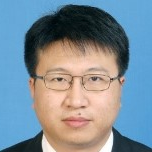Topic Menu
► Topic MenuTopic Editors



Transportation Electrification Key Applications: Battery Storage System, DC/DC Converter, Wireless Charging, Sensors
Topic Information
Dear Colleagues,
Transportation electrification has been gaining attention worldwide due to its ability to reduce energy consumption and help halt the pollution crisis. To accelerate electrification development, accurately perceiving and processing various electrification information, confirmation of the safety and reliability of the energy storage systems in electric vehicles, electric ships and electric aircraft is a challenging task. Regarding this task, related systems and techniques such as battery management systems, energy management systems, and wireless charging are proposed and continually innovated, which further enhance the performances of energy storage systems in terms of their safety, reliability and efficiency.The main objective of this Special Issue is to provide a platform to present the latest techniques in this field. Both high-quality original research and review articles that concern advanced battery management systems, intelligent energy management systems and wireless charging designs are welcome. Submission topics include, but are not limited to:
- Advanced energy storage device design and control in power systems;
- Battery echelon use and full lifespan management;
- Big data analysis for the fault diagnosis of battery storage systems;
- Machine learning and deep learning for battery safety management;
- Multi-physics field modeling, simulation, and experiments of battery systems;
- SOX estimation/RUL prediction of battery systems;
- New topology of DC/DC converters for battery charging;
- Reliability and safety of battery charging systems;
- Control strategies and the safety evaluation of wireless chargers;
- Application of sensors in the field of transportation electrification;
- Novel technology for electrical machine systems.
Dr. Xiaoyu Li
Dr. Jinhao Meng
Prof. Dr. Xu Liu
Topic Editors
Keywords
- battery storage system
- energy management system
- fault diagnosis
- DC/DC converter
- wireless charging
Participating Journals
| Journal Name | Impact Factor | CiteScore | Launched Year | First Decision (median) | APC | |
|---|---|---|---|---|---|---|

Batteries
|
4.0 | 5.4 | 2015 | 17.7 Days | CHF 2700 | Submit |

Energies
|
3.2 | 5.5 | 2008 | 16.1 Days | CHF 2600 | Submit |

Machines
|
2.6 | 2.1 | 2013 | 15.6 Days | CHF 2400 | Submit |

Sensors
|
3.9 | 6.8 | 2001 | 17 Days | CHF 2600 | Submit |

Sustainability
|
3.9 | 5.8 | 2009 | 18.8 Days | CHF 2400 | Submit |

MDPI Topics is cooperating with Preprints.org and has built a direct connection between MDPI journals and Preprints.org. Authors are encouraged to enjoy the benefits by posting a preprint at Preprints.org prior to publication:
- Immediately share your ideas ahead of publication and establish your research priority;
- Protect your idea from being stolen with this time-stamped preprint article;
- Enhance the exposure and impact of your research;
- Receive feedback from your peers in advance;
- Have it indexed in Web of Science (Preprint Citation Index), Google Scholar, Crossref, SHARE, PrePubMed, Scilit and Europe PMC.

